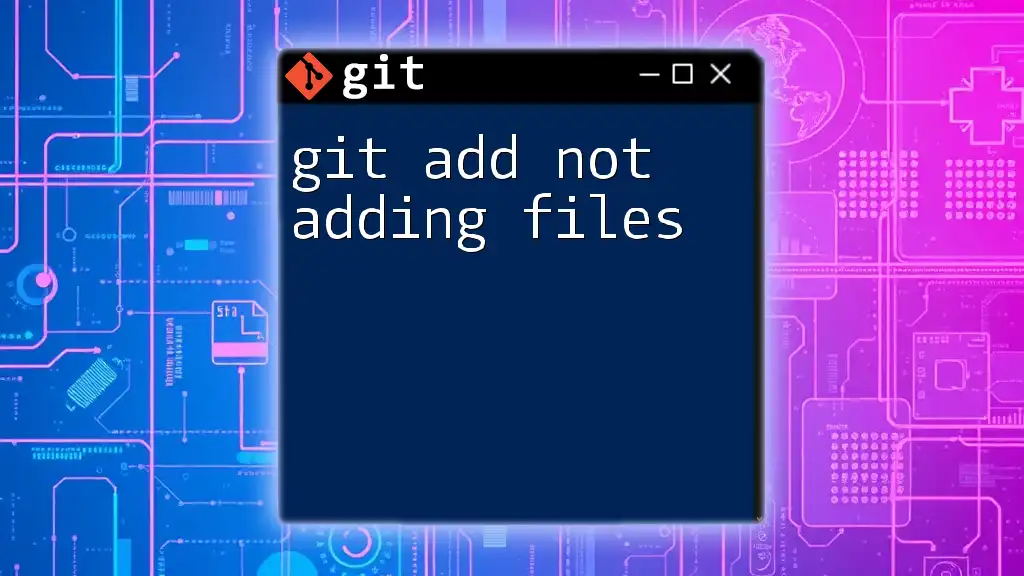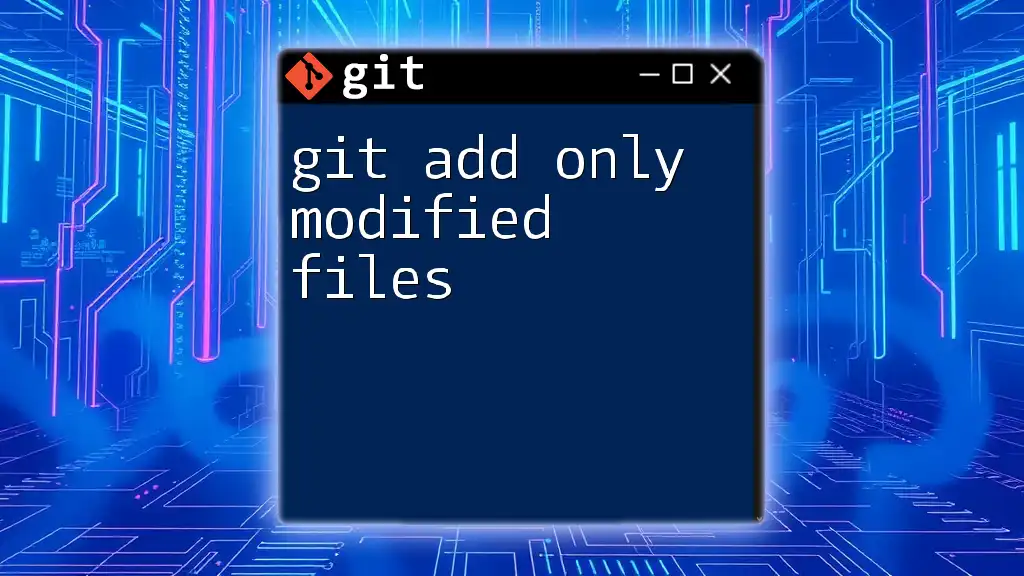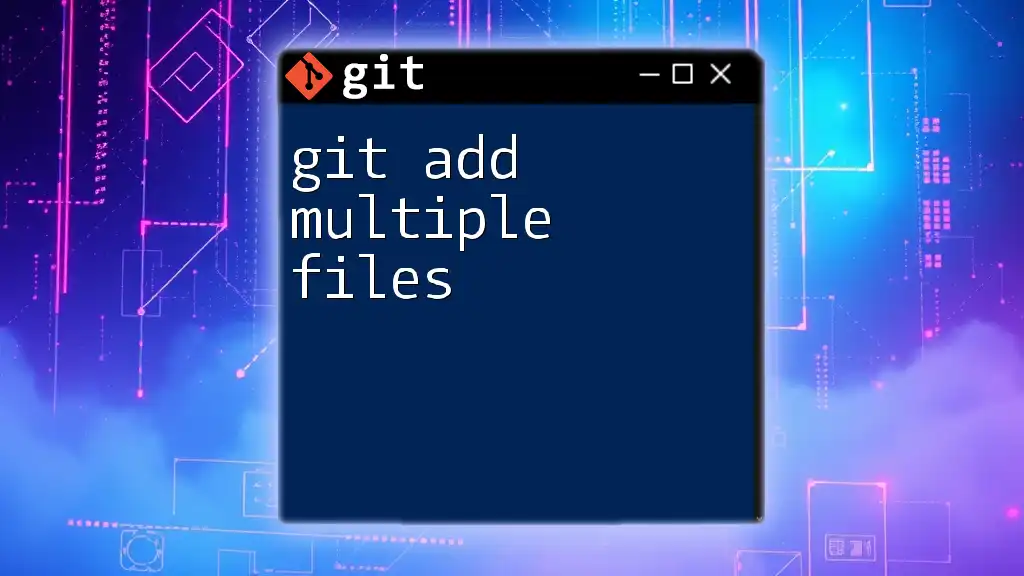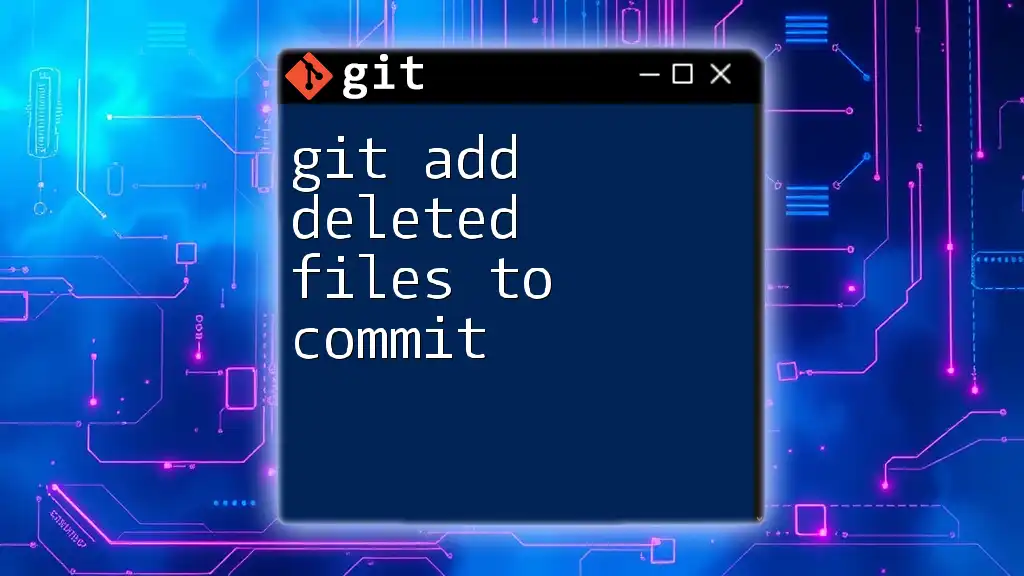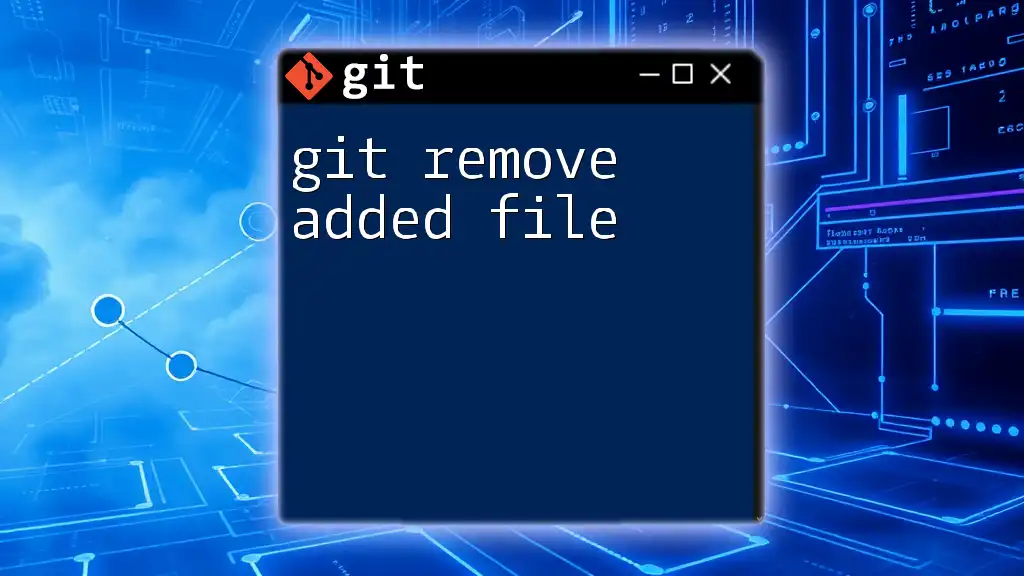If `git add` is not adding files, it may be due to the files being ignored by a `.gitignore` rule or they haven't been created yet; ensure your files aren't listed in `.gitignore` and check their existence.
git check-ignore -v path/to/your/file.txt
Understanding the Git Add Command
What is `git add`?
The `git add` command is a vital part of the Git version control workflow. It is responsible for adding changes in your working directory to the staging area. This is an important step because it separates the act of modifying files from the act of committing those changes to the repository. Distinguishing between these two processes allows you to prepare a clean and intentional set of changes for future commits.
How `git add` Works
When you invoke `git add`, you are telling Git to keep track of changes to specific files. These files can be new, modified, or deleted. While it seems straightforward, the correct execution of this command ensures that only the desired changes are included in the next commit.
A typical workflow using `git add` involves:
git add <file>
git commit -m "Your commit message"
In this example, `<file>` represents the specific file you want to stage, while the commit message describes what you've changed.

Common Reasons Why `git add` Might Not Add Files
File Path Issues
One of the common pitfalls when using `git add` is the failure to specify the correct file path. Git commands expect either relative or absolute paths to locate files accurately. If you access a file using a path that does not match the file's location, Git will not add it to the staging area.
For example, if your file is located in a subfolder named `folder` and you attempt to add it without including the folder name:
git add file.txt # Incorrect
You should correctly reference the file:
git add ./folder/file.txt # Correct
This ensures Git knows where to find the file and successfully stages it.
Untracked vs Tracked Files
What are Untracked Files?
Untracked files are new files that have not been staged or committed yet. They sit in your working directory and are excluded from the version control process until you explicitly ask Git to track them. You can identify untracked files by using the command:
git status
This will show you a list of all untracked files, which will appear under the "Untracked files" section.
How to Stage Untracked Files
To stage an untracked file, you can use:
git add <untracked_file>
This command signifies that you want Git to start tracking changes to that file. If you have multiple untracked files and want to stage them all, you can use:
git add .
This command stages every untracked file within the current directory and its subdirectories.
Ignored Files
Understanding .gitignore
The `.gitignore` file specifies intentionally untracked files or directories that Git should ignore. This file plays an essential role in avoiding the clutter of unnecessary files (like logs or build artifacts) in your repository. Common patterns found in `.gitignore` include:
*~
*.log
/build/
These entries prevent certain types of files from being added to the staging area.
Checking if Files are Ignored
To determine if a specific file is being ignored by Git, you can run:
git check-ignore -v <file>
This command helps diagnose why a file may not be staging even after you've tried to add it.
Changes in File Types
Sometimes `git add not adding files` may relate to file types that Git either does not recognize or is configured to ignore. If you have file extensions that are inadvertently included in the `.gitignore`, these files will not be staged. Always double-check your `.gitignore` file if certain files aren’t being added.
Changes Not Detected by Git
File System Issues
There can be file system anomalies that prevent Git from detecting changes properly. Issues like file corruption or improper syncing can lead to Git failing to add files. To refresh your working directory and ensure that Git recognizes all changes, you can use:
git status
Reviewing the output can help you understand what changes are being tracked and which are not.
Staging All Changes
Using Git Add with Wildcards
If you wish to stage all changed files at once, wildcards can be a powerful ally. Using:
git add .
will add all modified, untracked, and deleted files in your current directory and subdirectories. While this can streamline the staging process, be cautious as it may include unwanted files.
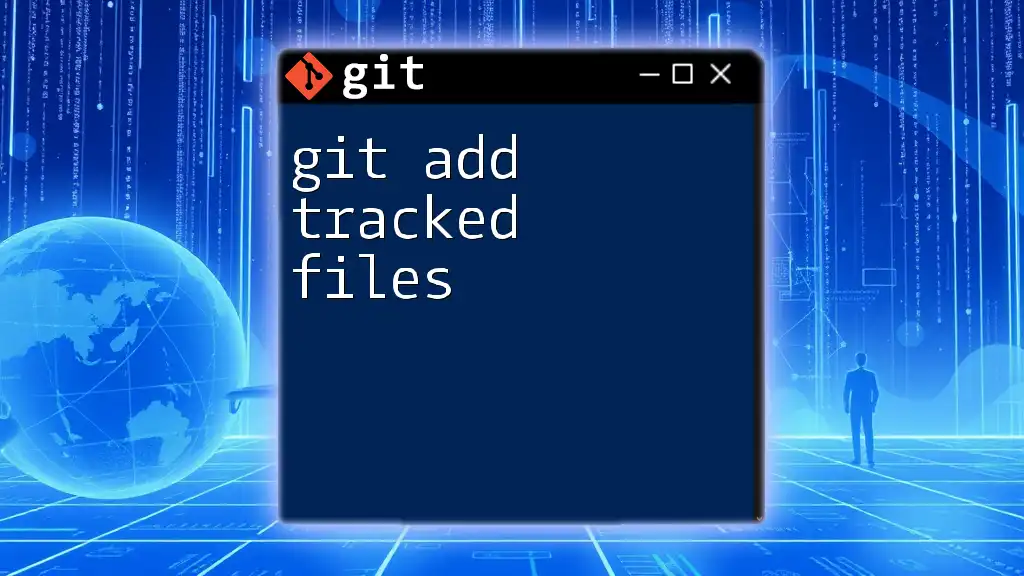
Troubleshooting Tips
Confirming Changes with `git status`
After running `git add`, always use:
git status
This command is your best friend when troubleshooting. It provides a clear and concise view of what files are staged for commit, what changes remain unstaged, and any untracked files.
Resetting the Staging Area
If you realize you've staged the wrong file, you can unstage it easily:
git reset <file>
This command removes the specified file from the staging area while keeping changes in your working directory intact.
Fixing Common Errors
Error: No Changes to Add
If you see the error message "no changes added to commit," it usually indicates that the files you intended to stage have not been modified or are not specified correctly. Always double-check your changes before running the command.
Error: Permission Denied
The "permission denied" error can occur when Git does not have access to the file you are trying to add. Ensuring the correct file permissions aids in avoiding this situation. Use commands like `chmod` to manage file permissions.
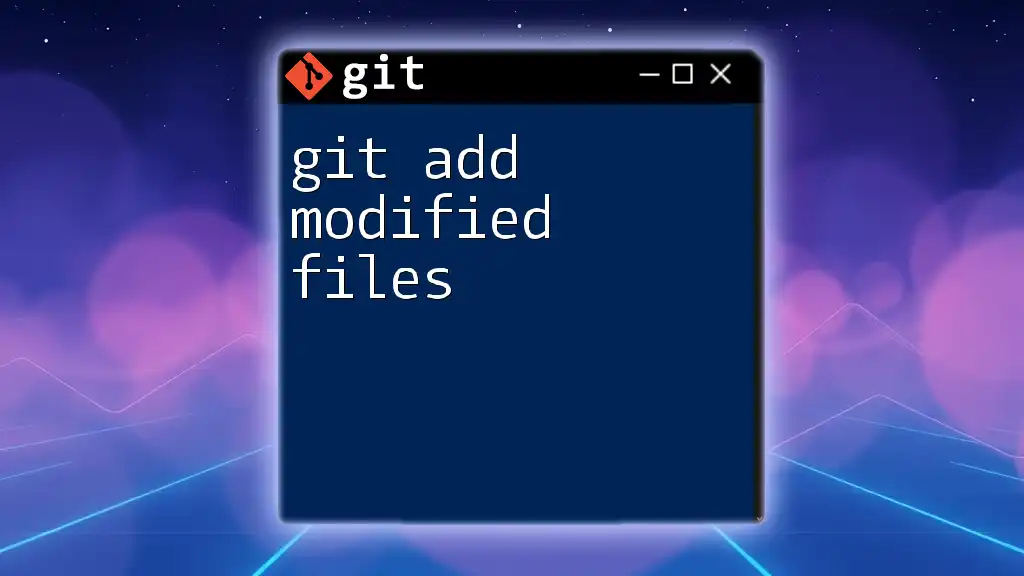
Best Practices for Using `git add`
Stage Regularly
Incorporating regular staging into your workflow allows you to commit logical, incremental changes. This practice helps ensure you maintain a clean history, making it easier to collaborate and track progress.
Use Descriptive Commit Messages
When committing changes, a meaningful message is essential. It helps others (and your future self) understand the context of changes. A common format is:
feat: description of new feature
fix: description of bug fix
By employing clear and consistent commit messages, you can enhance project management and facilitate future code reviews.

Conclusion
In summary, encountering issues with git add not adding files can stem from various aspects, including file path errors, untracked files, ignored patterns, or file type changes. Understanding these components can empower you to troubleshoot effectively and streamline your Git workflow. Don't hesitate to practice `git add` regularly, and allocate effort into writing thoughtful commit messages. The more familiar you become with these processes, the more proficient you will be in navigating Git's powerful version control capabilities.
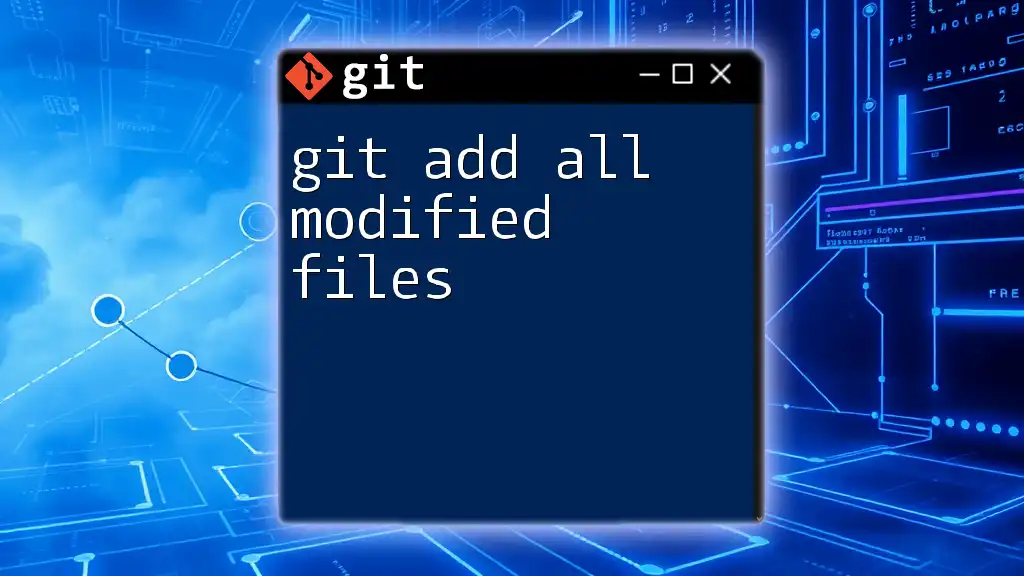
Additional Resources
For further learning, consider exploring additional documentation on Git commands and best practices, or check out Git GUI tools tailored for beginners. These resources can help deepen your understanding of version control and streamline your development processes.

